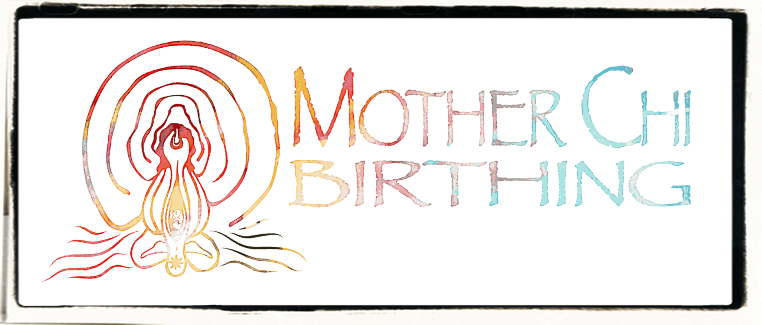The transformations, both psychologically and physically, are sometimes too great for words. We often ponder things in our hearts, never truly processing the magnitude of what it means to birth and walk the postpartum path. In the labyrinth of birth, we are culturally conditioned to focus on the journey in, to birth, but not on the journey back out…back to balance and healthful routine. Many newly initiated parents find themselves lost in post labor-land…for they have just experienced a miracle and often times get swept away into the magical world of new life. The jolt of reality that is postpartum can become a mountain that, without due support, may seem unsurpassable. So how do we get the support we need in a culture where postpartum care does not receive the weight it deserves? How can we better understand our bodies and minds so that we might meet their postpartum needs? Perhaps we should consider what is happening inside of our bodies so that we might find solutions to bring us calm, healing, and clarity. By listening to our bodies, we open ourselves to clear communication and fluidity that would otherwise not exist.
Shedding light on the interwoven nature of bodily hormones is crucial in giving us a strong postpartum foundation. Think of a tapestry. All of the colors and textures come together to form a pattern. The pattern can be alive and flowing, or without proper ratio, lifeless and dull. Our hormones operate much in the same way. Estrogen, progesterone, thyroid, prolactin, oxytocin, cortisol, and vasopressin come together to healthfully lead us to greener pastures, or un-healthfully send us into the depths of despair. They are friend and foe depending on proportion.
Estrogen in balance helps promote proper thyroid function, improves brain activity, and prevents the breakdown of serotonin, leading to better sleep. Out of balance, it has been known to increase the risk of fatigue, lethargy, and consequently, postpartum depression. With the birth of the placenta, estrogen levels drop to less than desirable levels.
High progesterone levels prepare our bodies for birth and then also drop dramatically with the delivery of the placenta. Breastfeeding women have been found to have more balanced levels of postpartum progesterone, whereas depressively symptomatic mothers seem to have lower levels of progesterone.
Both estrogen and progesterone affect thyroid production. Hyperthyroidism (too much) can produce anxiety and obsessive behavior, while hypothyroidism (too little) can lead to fatigue, lethargy, and weight gain, both communing very closely with depression. Again, the birth of the placenta greatly affects the levels of thyroid stimulating hormone. A balanced thyroid promotes healthy levels of cortisol and prolactin.
High cortisol levels may result in a weakened immune system and production of postpartum thyroid antibodies that affect thyroid efficiency. Low levels of cortisol can bring about adrenal insufficiency, leading to anxiety, lack of sexual desire, and low blood pressure. This adrenal suppression has been known to accompany depressive behavior. Balanced cortisol levels support balanced prolactin levels.
Healthy amounts of prolactin cultivate ground for a successful breastfeeding experience. Prolactin helps to stimulate milk production and self stabilizes in the presence of lactation. In low amounts, the chances for anxiety, depression, and hostility increase.
In the presence of oxytocin, prolactin levels are stabilized and maintained. Oxytocin promotes lactation efficiency, stimulates uterine contraction during and after labor, aides in pain coping, and greatly influences our maternal responses. In balance, oxytocin brings about good feelings, a sense of pleasure, and clearer cognitive behavior. The lack of such a delicious hormone can send us spiraling towards imbalance, and like dominos, knocks our system to the core.
In tandem with oxytocin, vasopressin helps to regulate the blood pressure and stands to maintain healthy electrolyte counts. In other words, vasopressin levels determine how fluidly our blood circulates to our organs and how well our organs hydrate and communicate, thereby affecting our overall body/brain function.
To support our system in a way that establishes hormone Yin and Yang, we must look to unconventional solutions. Solutions that may or may not be the popular system of choice, as the popular path seems to be allowing the ship to run upon rocky shore, even in the presence of warning and danger. We are culturally conditioned to think that hitting rock bottom warrants discussion and response…while heeding the call of our body beforehand makes us paranoid or needy. My friends, may you follow that little voice within that calls you to listen with all your might and all your soul. If we can get past the cultural stipulation of staying inside the box, we can offer our body and mind the precise support that it needs.
Consider for a moment the benefits of placenta encapsulation. We know that our foundation is deeply shaken with the birth of the placenta, and we also know that the passing of the placenta results in a lack of hormone balance in our bodies after labor. So why not reap the benefits of all this precious organ has to offer? Treated with the methods of traditional Chinese medicine, the placenta takes on medicinal form…a medicine that is perfectly created by your body for your body! All of the hormones that get depleted due to placental passage now come back to your body to create balance and healing. By consuming our placenta, we create a cocoon around ourselves, thereby establishing a safe and productive place to grow and evolve into our new role. With hormonal balance, we find cognitive balance…and cognitive balance provides us with the space to ask for what we need. If we have balance, we have clarity. If we have clarity, we find solutions.
Love yourself. Honor yourself. Plant seeds of renewed energy, life, and equilibrium inside of yourself by encapsulating and consuming this life sustaining treasure.
Stepping outside of the box,
Betsy

.jpg)













No comments:
Post a Comment